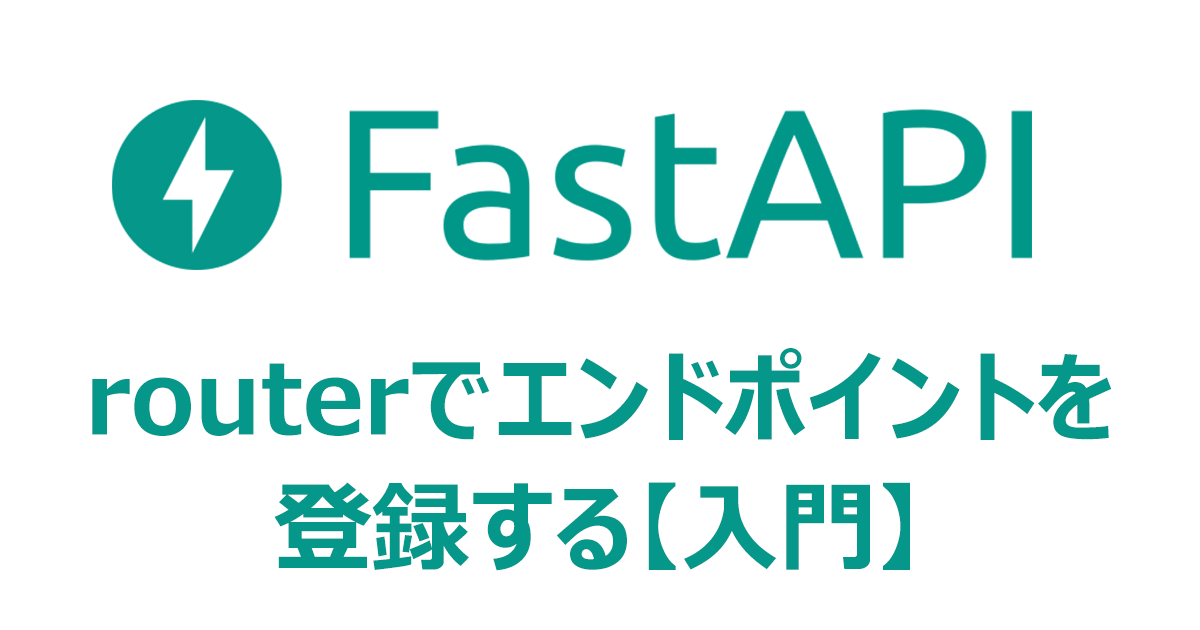【FastAPI】routerでエンドポイントを登録する【入門】
当ページのリンクには広告が含まれています。

FastAPIでファイルを分割してエンドポイントを登録する方法をご紹介いたします。
from fastapi import FastAPI
app = FastAPI()
@app.get('/hello')
def index():
return 'Hello World'main.pyにはあらかじめ上記コードを作成しております。
FastAPIの基礎についての記事まとめ
目次
routerの作成
まずはエンドポイント作成用のrouterディレクトリを作成し、中にarticles.pyを作成します。
routerのインスタンス化
routerのインスタンスを作成します。
from fastapi import APIRouter
router = APIRouter(
prefix='/article',
tags=['article']
)prefixは、これから作成するエンドポイントの頭のURLを表しています。
tagsはhttp;//127.0.0.1/docsの分類として用いられます。
関連記事


【FastAPI】APIドキュメントに説明を追加する【入門】
FastAPIにはとても便利な自動生成されるAPIドキュメントがあります。 このドキュメントはタグで分類したり、任意の説明文章を追加することが簡単にできますのでご紹介い…
エンドポイントの作成
ここでは簡単なエンドポイントを二つ作成してみます。
関連記事


【FastAPI】パラメータ・リクエストボディの使い方【入門】
FastAPIでは、簡単に受け取るパラメーターやリクエストボディの記述が可能です。 今回は、パス・クエリパラメーターやリクエストボディの記述方法をご紹介いたします。 …
- 全ての記事を取得できる
/article/all - 任意のIDの記事を取得できる
/article/{id}
from fastapi import APIRouter
router = APIRouter(
prefix='/article',
tags=['article']
)
@router.get('/all')
def get_all_articles():
return {'message': f'All articles'}
@router.get('/{id}')
def get_article(id: int):
return {'message': f'Blog is {id}'}これらを作成しました。prefixで/articleとしているので各エンドポイントには追記不要です。
しかし、このままではドキュメントを確認してもarticleエンドポイントは表示されていません。インスタンスに登録する必要があります。
main.pyへ登録
main.pyにあるappインスタンスにrouterを含めます。
routerからarticleをインポートして、app.include_router(articles.router)で登録しています。
from fastapi import FastAPI
from router import articles
app = FastAPI()
app.include_router(articles.router)
@app.get('/hello')
def index():
return 'Hello World'これでドキュメントを確認して登録されていれば完了です。
FastAPIの基礎についての記事まとめ

コメント